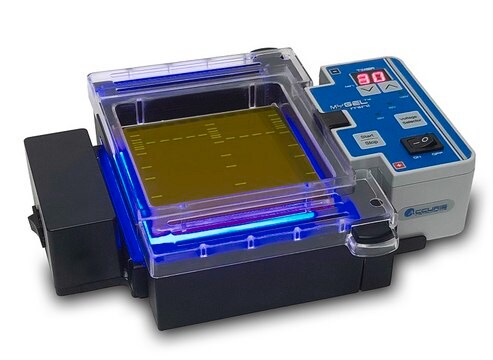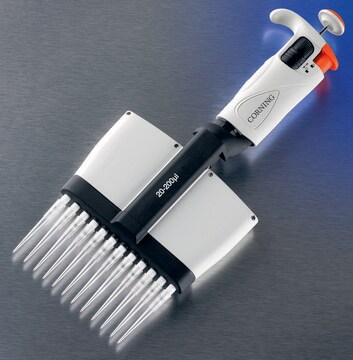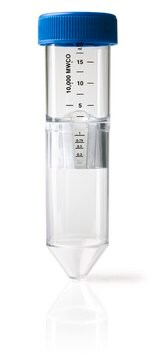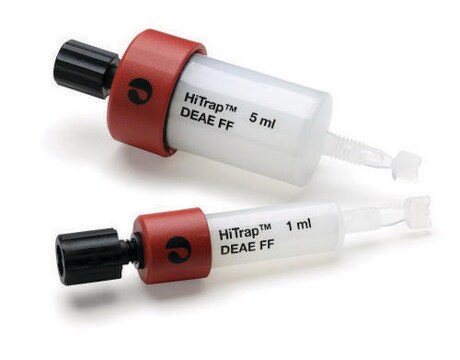MABF2751
Anti-Murine Coronavirus MHV-JHM nucleocapsid Antibody, clone 1-16-1
About This Item
Polecane produkty
pochodzenie biologiczne
mouse
Poziom jakości
białko sprzężone
unconjugated
forma przeciwciała
purified antibody
rodzaj przeciwciała
primary antibodies
klon
1-16-1, monoclonal
masa cząsteczkowa
calculated mol wt 49.73 kDa
observed mol wt ~50 kDa
oczyszczone przez
using protein G
reaktywność gatunkowa
SARS coronavirus
opakowanie
antibody small pack of 100 μL
metody
immunofluorescence: suitable
immunohistochemistry (formalin-fixed, paraffin-embedded sections): suitable
immunoprecipitation (IP): suitable
western blot: suitable
izotyp
IgG1κ
sekwencja epitopowa
Unknown
numer dostępu Protein ID
numer dostępu UniProt
Warunki transportu
2-8°C
docelowa modyfikacja potranslacyjna
unmodified
informacje o genach
vaccinia virus ... n> N(1489757)
Opis ogólny
Specyficzność
Immunogen
Zastosowanie
Oceniane metodą Western Blotting w lizatach komórek mysiego opóźnionego guza mózgu (DBT).
Analiza Western Blotting: Rozcieńczenie 1:500 tego przeciwciała wykryło nukleokapsyd koronawirusa mysiego MHV-JHM w lizatach komórek opóźnionego guza mózgu myszy (DBT).
Testowane aplikacje
Analiza Western Blotting: Reprezentatywna partia wykryła nukleokapsyd koronawirusa mysiego MHV-JHM w zastosowaniach Western Blotting (Leibowitz, J.L., et al. (1987). Adv Exp Med Biol. 218; 321-31).
Analiza immunofluorescencyjna: Reprezentatywna partia wykryła nukleokapsyd Murine Coronavirus MHV-JHM w zastosowaniach immunofluorescencji (Nanda, S.K., et al. (2001). J Virol. 75(7):3352-62).
Zastosowania immunohistochemiczne: Reprezentatywna partia wykryła nukleokapsyd Murine Coronavirus MHV-JHM w zastosowaniach immunohistochemicznych (Miura, T.A., et al. (2008). J Virol. 82(2):755-63; Navas, S., et al. (2001). J Virol. 75(5):2452-7).
Analiza immunoprecypitacji: Reprezentatywna partia wykryła nukleokapsyd Murine Coronavirus MHV-JHM w zastosowaniach immunoprecypitacji (Nanda, S.K., et al. (2004). Arch Virol. 149(1):93-111).
Uwaga: Rzeczywiste optymalne rozcieńczenia robocze muszą być określone przez użytkownika końcowego jako próbki, a warunki eksperymentalne mogą się różnić w zależności od użytkownika końcowego.
Postać fizyczna
Przechowywanie i stabilność
Inne uwagi
Oświadczenie o zrzeczeniu się odpowiedzialności
Nie możesz znaleźć właściwego produktu?
Wypróbuj nasz Narzędzie selektora produktów.
Kod klasy składowania
12 - Non Combustible Liquids
Klasa zagrożenia wodnego (WGK)
WGK 1
Temperatura zapłonu (°F)
Not applicable
Temperatura zapłonu (°C)
Not applicable
Certyfikaty analizy (CoA)
Poszukaj Certyfikaty analizy (CoA), wpisując numer partii/serii produktów. Numery serii i partii można znaleźć na etykiecie produktu po słowach „seria” lub „partia”.
Masz już ten produkt?
Dokumenty związane z niedawno zakupionymi produktami zostały zamieszczone w Bibliotece dokumentów.
Nasz zespół naukowców ma doświadczenie we wszystkich obszarach badań, w tym w naukach przyrodniczych, materiałoznawstwie, syntezie chemicznej, chromatografii, analityce i wielu innych dziedzinach.
Skontaktuj się z zespołem ds. pomocy technicznej






